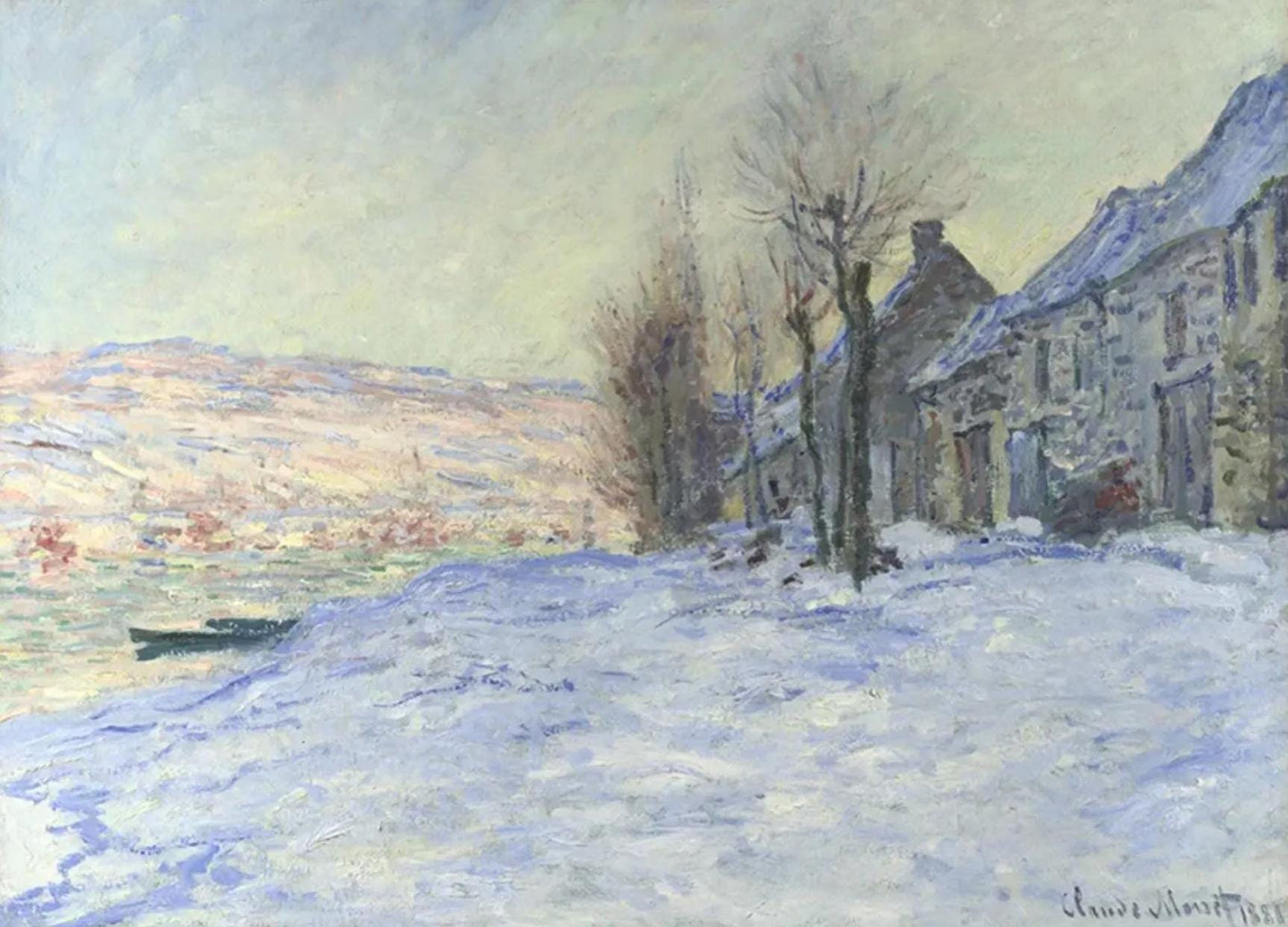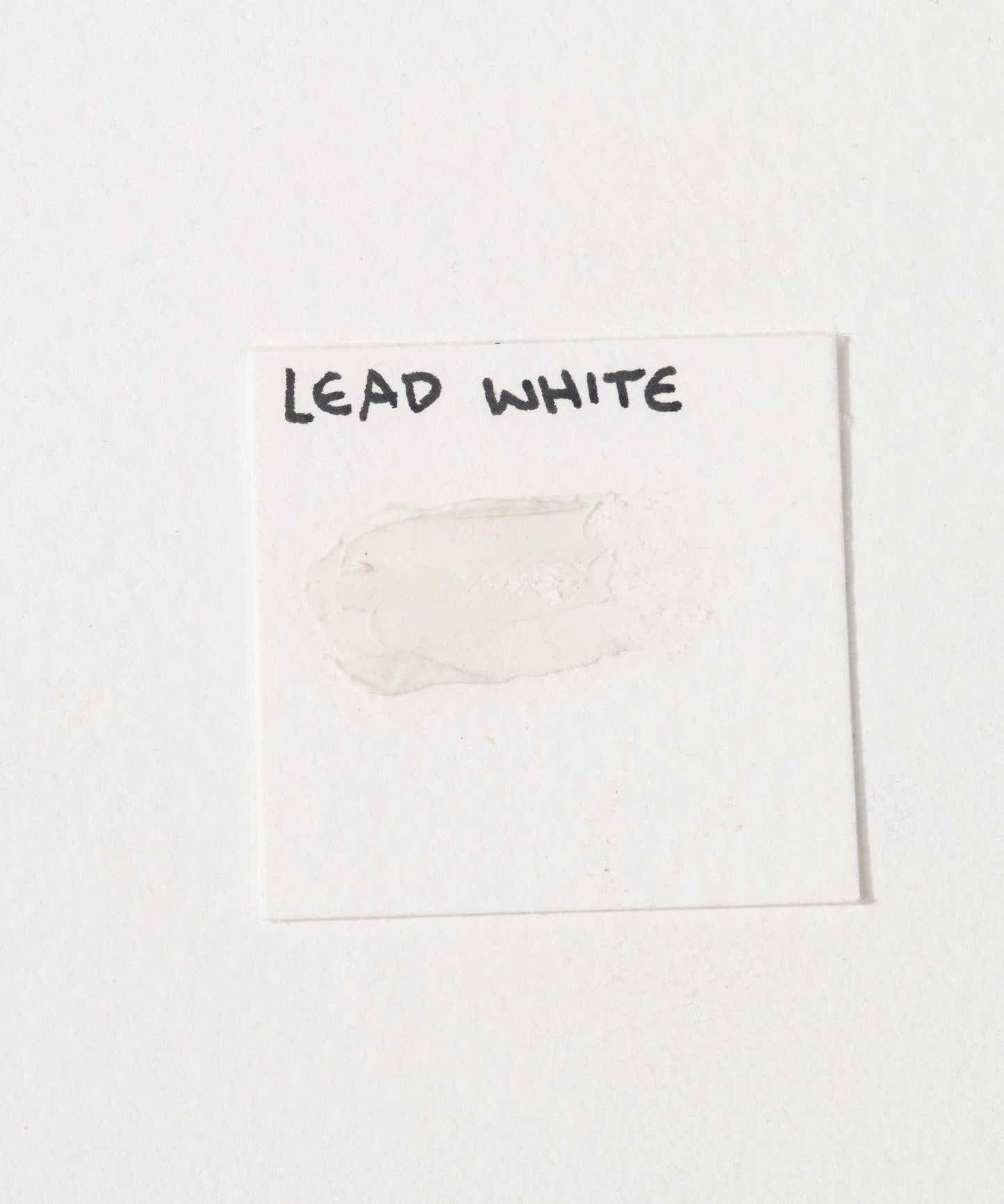Lead White | SEE SAFETY
Lead White | SEE SAFETY
Couldn't load pickup availability
Share



PROFESSIONAL USE
READ SAFETY INFORMATION
Description
Lead White is a handmade single pigment made through a chemical reaction similar to the historical process known as the "stack process," in which metallic lead sheets were exposed to vinegar fumes and carbon dioxide, allowing lead carbonate to form over time. This method produced an exceptionally smooth, highly opaque, and flexible white pigment that has been revered by artists for centuries. Lead White is prized for its warm undertones, excellent blending properties, and unparalleled handling in oil painting. Lead white must be used with gloves and a respirator in dry form due to its toxicity.
Lead White has exceptional lightfastness, making it highly durable for both classical and contemporary artwork. It blends seamlessly with other pigments, offering bright highlights and a warm, natural tone in paintings. Its semi-opaque quality allows for superior layering, glazing, and soft color transitions in oil and tempera applications. Compared to modern whites such as Titanium or Zinc White, Lead White has unique rheological properties, improving the flow and flexibility of oil paints while reducing brittleness and being much more transparent than both Zinc and Titanium White.
History
White pigments have been essential in painting for millennia, with Lead White being the dominant choice for artists until the 20th century.
During antiquity, the ancient Egyptians, Greeks, and Romans produced Lead White for use in frescoes, decorative arts, and cosmetics. The Romans refined its production, using vinegar and lead sheets to accelerate the formation of basic lead carbonate.
In the Middle Ages and Renaissance, Lead White became the most important white pigment for manuscript illumination, frescoes, and panel painting. It was the preferred white for artists such as Leonardo da Vinci, Rembrandt, and Vermeer, who valued its warm, luminous quality and smooth blending.
By the 18th and 19th centuries, Lead White was the standard white pigment in oil painting, used in nearly all European painting traditions. However, concerns over lead toxicity led to the development of alternative whites, such as Zinc White and later Titanium White. In the pictured artwork 'Lavacourt under Snow' by Claude Monet, lead white serves as the primary pigment throughout for the bright tints of the snow, sky, and buildings.
In the 20th century, the production of Lead White was restricted in many countries due to health concerns. It remains legal for professional artists in some regions, particularly for historical and restoration work, but is no longer widely manufactured for general use.
Today, Lead White is still sought after by conservators, traditional oil painters, and restoration specialists for its unique properties, despite its toxicity and limited availability.
Health and Safety
Warnings:
CONTAINS LEAD. HARMFUL IF SWALLOWED OR INHALED. ABSORBED THROUGH SKIN. Avoid inhalation, ingestion, or skin contact. Wear protective clothing, gloves, and appropriate respirator (N95 is not sufficient) to prevent contact with skin and respiratory system. Never use near children or pets.
Hazard Designation:
H302 Harmful if swallowed.
H332 Harmful if inhaled.
H360 May damage fertility or the unborn child.
H373 May cause damage to organs through prolonged or repeated exposure.
H410 Very toxic to aquatic life with long lasting effects.
Safety Designation
P260 Do not breathe dust/fume/gas/mist/vapors/spray.
P261 Avoid breathing dust/ fume/ gas/ mist/ vapors/ spray.
P280 Wear protective gloves/ clothing/ eye/ face protection.
P281 Use personal protective equipment as required.
P405 Store locked up.
P501 Dispose of contents/ container according to regional, national and international regulations.
Precautions:
Keep out of reach of children and pets.
Do not consume.
Not for cosmetic or food usage.
Do not spray apply.
For further health information contact a poison control center.
Use care when handling dry pigments and avoid dust formation.
Use particular caution with fibrous, fine, or toxic pigments.
Do not eat, drink, or smoke near dry pigments.
Avoid breathing in pigment dust and use a NIOSH-certified dust respirator with sufficient rating for dry pigment.
Wash hands immediately after use or handling.
If dust is likely, always wear protective clothing to keep out of eyes, lungs, off skin, and out of any contact as well as keep area ventilated.
This product contains lead and is known by the State of California to cause cancer, birth defects, or reproductive harm.
Warnings and bottle information are abbreviated.
Pigment Information
Pigment Type: Synthetic (Lead Carbonate) from minerals (2PbCO₃·Pb(OH)₂)
Suitable Mediums: Oil, Tempera
Lightfastness: Best
Opacity: Semi-opaque
Other Names: Flake White, Cremnitz White, Bianco di Piombo
Color Index Code: PW1
Image: 'Lavacourt under Snow' by Claude Monet from the National Gallery



